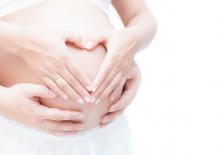
We are often asked what can I do to improve my chances of success with natural conception or IVF.
We always recommend optimising lifestyle for both partners; good diet, exercise, minimise alcohol consumption, healthy weight, quit smoking. This is to improve health for pregnancy as much as to optimise it for IVF. Vitamins are recommended particularly folic acid and iron. Often this is taken as part of a multi -vitamin.
Factors with a positive impact
Age This is a major determinant. IVF does not reverse age-related decline in fertility particularly over 40 years. This is due to a decline in the number of eggs available and their quality. This results in lower numbers of eggs collected, lower implantation rates and higher miscarriage rates.
Live birth rates by age are 40% for those younger than 35, 30% for 35-37, 22% for 38-40 , 11% for 41-42 and 4% for >42.
Ovarian reserve can be assessed by measuring AMH (Anti-Mullerian hormone ) in the blood and Antral follicle count on ultrasound, and by checking FSH level in early cycle (Day2-3).
There is no age related fall in pregnancy rates if donor eggs are used.
Past reproductive history
A previous live birth is associated with a higher likelihood of IVF success, while 1 or more miscarriages does not reduce the likelihood.
Lack of success in a previous IVF cycle does not decrease success in subsequent cycles until around the fourth cycle.
Factors with a negative impact
Hydrosalpinx
Studies consistently show poor outcome with a halving of pregnancy rates. Salpingectomy (removal of the tube) improves success. This is thought to be due to a toxic effect from tubal fluid affecting the embryo or endometrium.
Smoking
Smoking reduces the number of eggs retrieved and has numerous detrimental health effects including a higher miscarriage rate.
Factors with no or modest impact
Fibroids
Location is important. No effect is seen from subserosal fibroids and a decreased chance of success occurs with submucosal fibroids. The effect of intramural fibroids is unclear. Submucosal fibroids distorting the cavity are usually removed. No study has confirmed that removal of those not distorting the cavity improves success.
Endometriosis/Endometriomas
Removal of asymptomatic endometriomas remains controversial as surgery does not improve success and may damage ovarian reserve.
Women with endometriosis having IVF have similar pregnancy rates to those having treatment for other causes.
There may be an increase in spontaneous pregnancy in the 6-9 months after treatment of endometriosis by surgery. This can be considered in subfertility where there are no other factors present.
Obesity
Infertility is more prevalent in overweight and obese women (BMI 25-29.9 and >30 respectively) and IVF may be less successful.
There is about a 6% reduction in pregnancy rates and a 13% reduction in live births. Miscarriage, preterm delivery and low birth weight are also increased.
Aspirin
Studies show no benefit in use at any time during or after an IVF cycle
Acupuncture
Studies show no statistical improvement in pregnancy rates but also no detrimental effect. Women may choose this as a component of treatment for stress relief and improved general well-being.
Acquired or Inherited thrombophilias/Heparin
The presence of anticardiolipin or lupus anticoagulant antibodies alone, or one of the common inherited thrombophilias does not appear to impact adversely IVF success. Available evidence suggests heparin is not routinely indicated when these women have IVF.
It may be discussed for cases of recurrent implantation failure or miscarriage but again evidence is limited.
The role of heparin in pregnancy is a separate issue.
Endometrial thickness
A 2014 review of studies of the association between endometrial thickness and IVF outcome concluded that it was a poor predictor of success and should not be used a criteria for cancellation, freezing of all embryos or refraining from future IVF.
While an endometrial thickness of <7mm did trend towards lower pregnancy rates this was rare (2.4% cases) and not possible to separate out from age and number of eggs retrieved. Further research is needed
References : Up To Date 2019
